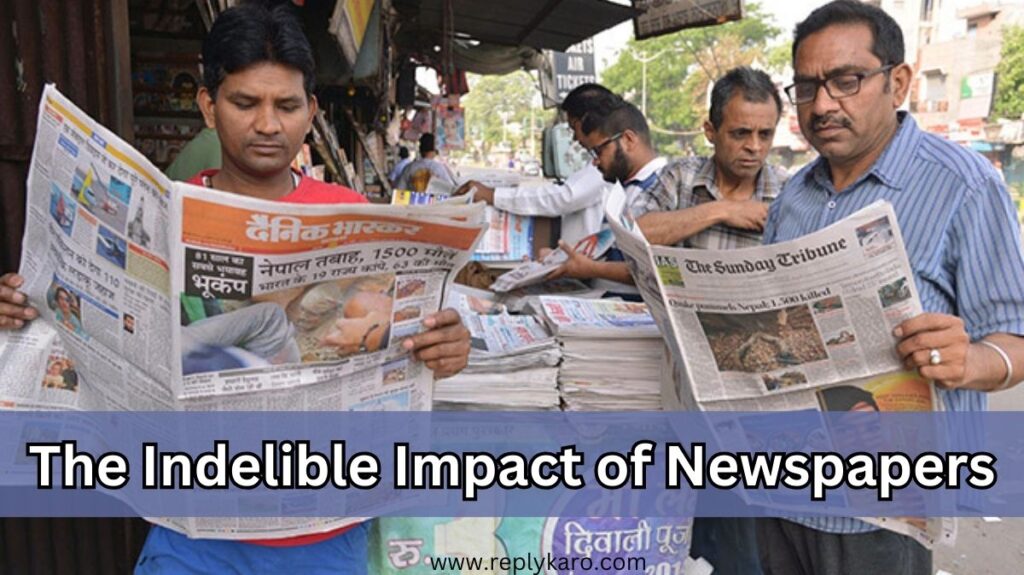The Enduring Ink: Celebrating Indian Newspaper Day and its Legacy
Every year on January 29th, India pauses to celebrate Indian Newspaper Day, a day dedicated to commemorating the birth of the first Indian newspaper and recognizing the invaluable role newspapers play in shaping the nation’s narrative. The journey from the handwritten pages of “Hicky’s Bengal Gazette” in 1780 to the vibrant tapestry of digital and print publications today reflects the resilience and evolution of India’s news landscape.
This year, as we mark Indian Newspaper Day 2024, it’s an opportune moment to reflect on the significance of newspapers in a rapidly changing media landscape. In this article, we’ll delve into the rich history of Indian newspapers, explore their enduring impact, and discuss the challenges and opportunities that lie ahead.
A Legacy Etched in Ink:
The story of Indian newspapers begins with James Augustus Hicky, an Irishman who launched “Hicky’s Bengal Gazette” in Calcutta on January 29, 1780. This weekly publication, primarily catering to the British community, served as a platform for news, opinions, and advertisements. Despite facing censorship and legal challenges, the “Gazette” ignited the spark of independent journalism in India.
In the decades that followed, numerous newspapers emerged, each reflecting the diverse voices and perspectives of the growing nation. From “Bombay Samachar”, the first Gujarati newspaper established in 1822, to “The Hindu”, founded in 1878 and known for its balanced reporting, these publications played a pivotal role in the Indian freedom struggle. They served as crucial platforms for sharing information, sparking debate, and mobilizing public opinion against British rule.
Post-independence, Indian newspapers thrived, becoming crucial instruments for nation-building. They disseminated information about government policies, economic developments, and social issues, fostering a sense of unity and shared identity among the diverse population. The iconic headlines of these times – “Freedom at Midnight,” “Man on the Moon,” and “India Wins the World Cup” – became etched in collective memory, serving as markers of historical milestones.

The Indelible Impact of Newspapers:
Beyond chronicling history, newspapers have profoundly shaped Indian society. They have:
- Empowered Citizens: By providing access to information and diverse viewpoints, newspapers have served as watchdogs for democracy, holding authorities accountable and empowering citizens to participate actively in the political process.
- For example, The Indian Express‘s expose on the Bofors scandal in the 1980s led to a major political upheaval and exposed corruption at the highest levels.
- Championed Social Change: Newspapers have been at the forefront of social movements, highlighting issues like gender inequality, caste discrimination, and environmental degradation, and advocating for reform and progress.
- The Times of India‘s coverage of the Nirma rape case in the 1990s helped mobilize public support for stricter laws against sexual violence.
- Educated and Entertained: With news, features, opinion pieces, and creative content, newspapers have catered to a wide range of interests, informing, educating, and entertaining readers for generations.
- Anandabazar Patrika, a Bengali daily, is known for its in-depth coverage of cultural and literary events, while The Hindu‘s children’s supplement, Young World, has been a popular source of entertainment and education for young readers for decades.
- Preserved Culture and Heritage: By documenting local stories, traditions, and languages, newspapers have served as custodians of India’s rich cultural heritage, ensuring its transmission to future generations.
- Malayala Manorama, a Malayalam daily, has been documenting the history and culture of Kerala for over a century, while The Telegraph‘s coverage of indigenous communities in the Northeast has helped raise awareness about their unique way of life.
Navigating the Digital Age:
In the 21st century, the media landscape has undergone a seismic shift with the rise of digital platforms. While newspapers face challenges like declining print readership and advertising revenue, they are adapting and innovating to remain relevant. Many publications have established strong online presences, offering digital subscriptions, multimedia content, and interactive features.
However, concerns remain about the quality and accuracy of information in the digital space, the spread of misinformation, and the sustainability of independent journalism. This underscores the need for continued support for newspapers and upholding journalistic ethics in the digital age.
Beyond Ink and Paper:
Indian Newspaper Day is not just about celebrating the past; it’s about looking towards the future and ensuring that newspapers continue to play a vital role in Indian society. By embracing innovation, upholding journalistic ethics, and promoting media literacy, newspapers can stay relevant in the digital age and continue to serve as the “fourth estate,” holding power accountable and informing citizens to actively participate in shaping the nation’s future.
Personal Anecdotes:
Newspapers have been a constant presence in my life since childhood. I remember eagerly awaiting the morning delivery, devouring the comics and sports section before diving into the news with my parents. The crinkled pages, the smell of ink, and the weight of the paper all added to the experience, making the news feel tangible and important. Even today, while I primarily consume news online, there’s something special about holding a physical newspaper, savoring the in-depth articles and well-curated perspectives.
Looking Ahead:
As we celebrate Indian Newspaper Day 2024, it’s crucial to recognize the enduring importance of newspapers in informing, engaging, and empowering Indian society. While the future of news consumption may lie in digital avenues, the core values of journalism – accuracy, objectivity, and accountability – remain indispensable.
By embracing innovation, upholding journalistic integrity, and fostering media literacy, newspapers can continue to be vital players in shaping India’s future narrative. Let us use this day to remember the legacy of print, appreciate the ongoing efforts of journalists, and pledge to support a free and vibrant media landscape in India.








